After decades of yo-yoing weight and attempts to lead a healthier life I realized my setbacks were usually linked to:
- Extended periods of chronic stress, fatigue and poor sleep.
- Festive seasons.
- Holidays.
- Being sick.
I would reach a point where I would decide “this is too hard”, would give up and return to some of my former bad habits.
At the start of 2022, I realized motivation was only getting me so far and I started reading self help books to find ideas to help.
The three things that helped me are:
- Identifying my values.
- Building healthier habits.
- Progress and not perfection.
In this post, I share how values, modifying habits and embracing progress has been important for helping me to achieve a healthier lifestyle.
Values and leading life by my values
Chronic stress leading to poor sleep and fatigue frequently impacted my desire to lead a healthier life so my starting point was to learn better strategies deal with.
Two of the early books I worked through were Dr Emma Hepburn’s “A Toolkit for Modern Life: 53 Ways to Look After Your Mind” and Dr Russ Harris’s “The Happiness Trap: Stop struggling, start living“.
Both books provided lots of helpful tips and strategies however the most important for helping lead a healthier life was identifying my values.
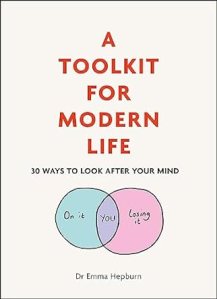

Values are our deepest desires of how we want to behave, they are guides to action, our personal qualities and how we want to live our life on an ongoing basis.
My values are: self care; self development, supportive, persistence, acceptance and open mindedness.
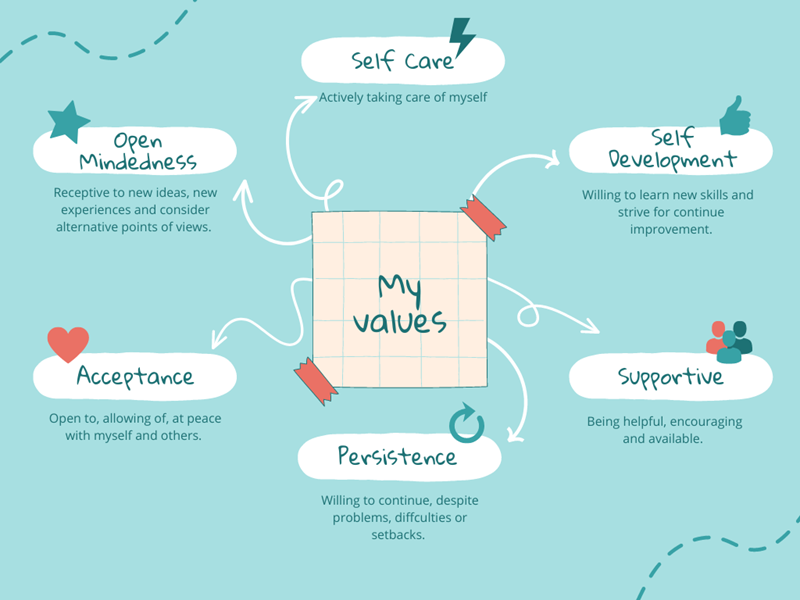
Identifying my values has meant that when making decisions I now think will my actions take me away from or towards my values.
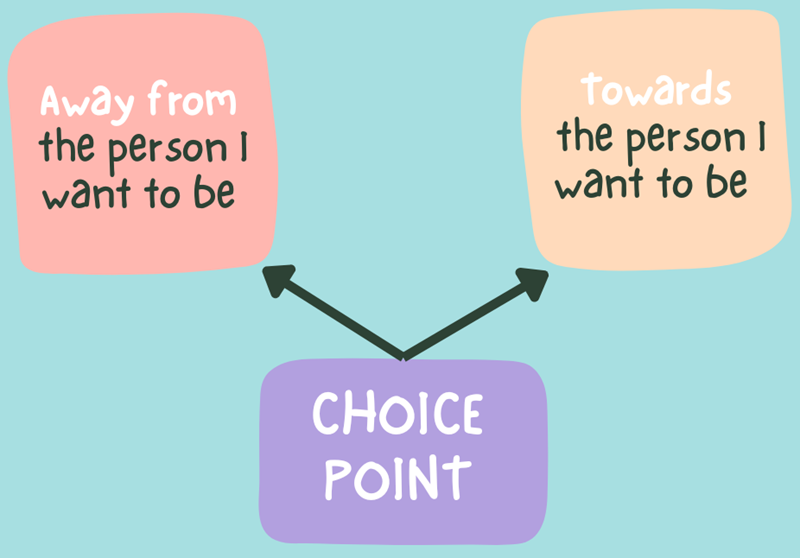
For example, self care and persistence are key values and my goal is to lead a healthier life style. Each day I focus on what is the most important things I need to do today for my self care which for me are:
- Get enough sleep.
- Reduce stress.
- Eat a healthy balanced diet.
- Get enough exercise.
Building New Habits
Building and maintaining new habits is a key factor in achieving lasting change. Replacing poorer habits with new healthier habits requires planning and intention.
An important part of eating a healthier diet and achieving a healthier weight after years of fluctuating weight was recognizing the impact of habits.
The two books about habits that helped are:
- James Clear’s “Atomic Habits“.
- BJ Fogg’s “Tiny Habits“.


Both books are excellent; their concepts and tips are similar. I read “Atomic Habits” first but probably learnt the most from “Tiny Habits“.
The same rules apply to both good and bad habits. The easier a behavior is the more likely it is to become a habit. When we fail to change a habit we blame ourselves when the issue is it is a design flaw and not a behavioral flaw. Bad habits repeat themselves not because we don’t want to change but because we have wrong systems to change.
There is only so many times we will ignore a prompt that triggers us for a bad behaviour as it relies on will power and you can only say no to a prompt so many times and will eventually give in. For example, I avoid having cakes, biscuits, ice-cream or chocolates in my house because if I have them near I will eventually eat them! Motivation only takes us so far! As a result I now use setbacks as a learning opportunity and no longer see them as a mistake or a reason to give up.
I use Fogg Behavior Model as a guide which is that only three variables drive behavior: motivation, ability and prompt.

The key steps for designing behavioral change are:
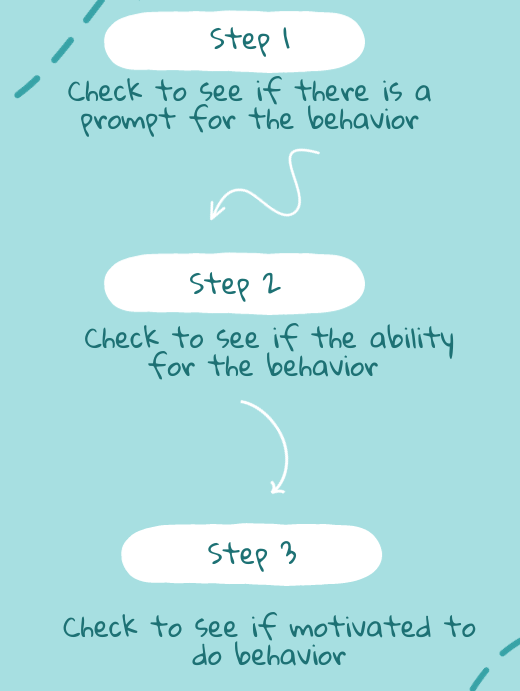
The best way to implement change is to always start with the prompt. No behavior happens without a prompt. You can stop a behavior by removing the prompt or start a new behavior by adding a prompt.
The masterplan for disrupting unwanted habits is:
- Create positive habits first.
- Design to stop habits second.
- Check to see if motivated to do behaviour.
Key steps for behavioral design:
- Step 1: Check to see if there is a prompt for the behavior.
- Step 2: Check to see if the ability for the behaviour
- Step 3: Check to see if motivated to do behaviour.
Implementing Healthier Habits
Below is a summary of how I used the tips I gained from “Atomic Habits” and “Tiny Habits” to achieve a sustained healthier lifestyle.
My goal is not to lose weight, it is eat healthier and live a healthier life. Achieving a healthier weight is part of the process.
To eat healthier and live a healthier life I needed to work out things such as:
- How can I make it obvious? How can I make it easy? How could I break it down into smaller habits to make it easier?
- What skills did I need to increase? What tools and resources did I need?
- How can I make it attractive? How can I make it satisfying?
- How could I fill the environment with the right cues (prompts). Make cues for good habits obvious and cues for bad habits invisible.
- How could I make the bad habits harder?
- What current habits do I have that I could link to new habits to achieve habit stacking.
Obvious and Easy?
Reviewing my habits I quickly realized that times when I was more likely to eat less healthier food were when I was tired or not at home. Solution to making it obvious and easy was most days of the week I make sure that our lunches and dinners are prepared in the morning after breakfast so that later in the day when I’m more likely to be tired we can just grab what we want to eat, or quickly cook it, for our lunch or dinner.
For example, I aim to include salads with at least one meal a day and cooked vegetables with the other meal.
To achieve this I have a selection of prepared salads in the fridge ready to choose from for lunches and the cut vegetables prepared ready for cooking later in the day.
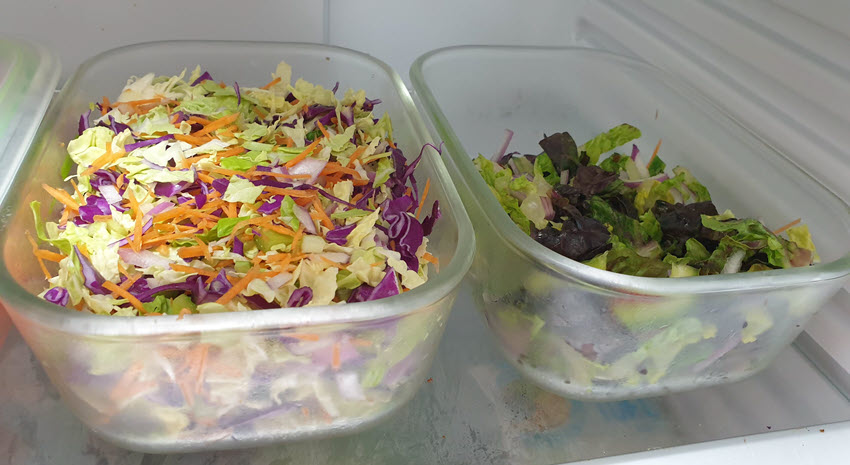
And lunch meal choices prepared for a few days so we can just quickly heat the meal then add the salad(s).
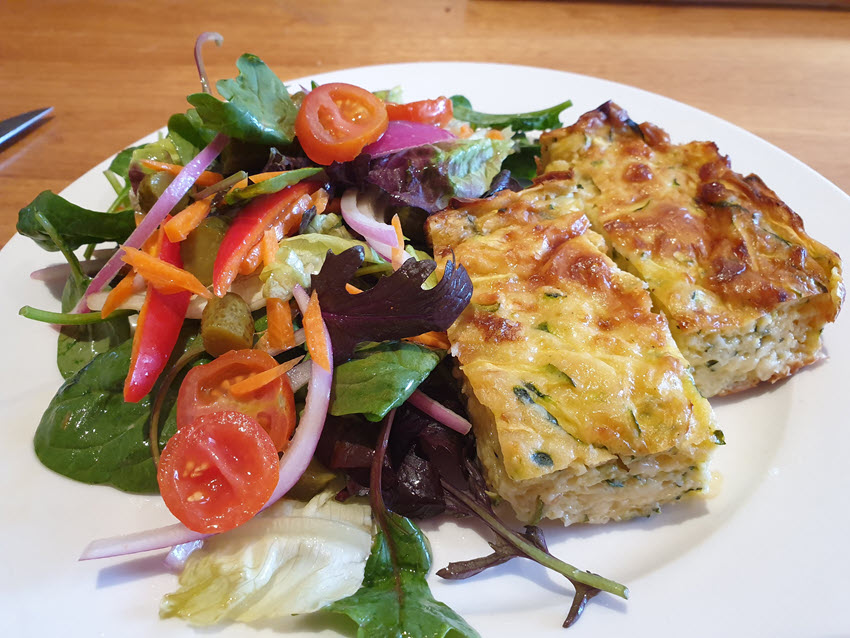
Eating out is more challenging. I have a list of healthier food options to choose from like Soul Origin and Subway but accept that it’s okay to choose less healthier choices when I’m out if I want to since I eat healthy 90 % of the time and being too restrictive can be detrimental.
Skills, Resources and Tools
Key skills has been increasing my cooking skills to make our meals healthier and ideally taste better so I would be less tempted to buy meals when we are out.
We now follow a plant diversity diet focused on gut health which you can read about in my Healthy Living – Food and Nutrition post. As we’ve transitioned to this diet I’ve had to learn lots of new cooking skills since tofu and legumes aren’t foods I’ve previously eaten much and had never cooked until recent years.
Fortunately I love cooking and enjoy reading so have increased my skills, knowledge and gain helpful tips from all the books I source from charity shops and libraries.
Below is a selection of recent cook books I’ve purchased from charity shops combined with a few of my favorite books. My favorite shop has a huge selection of great books to select from as it sells second hand books discarded by our State Reference library.
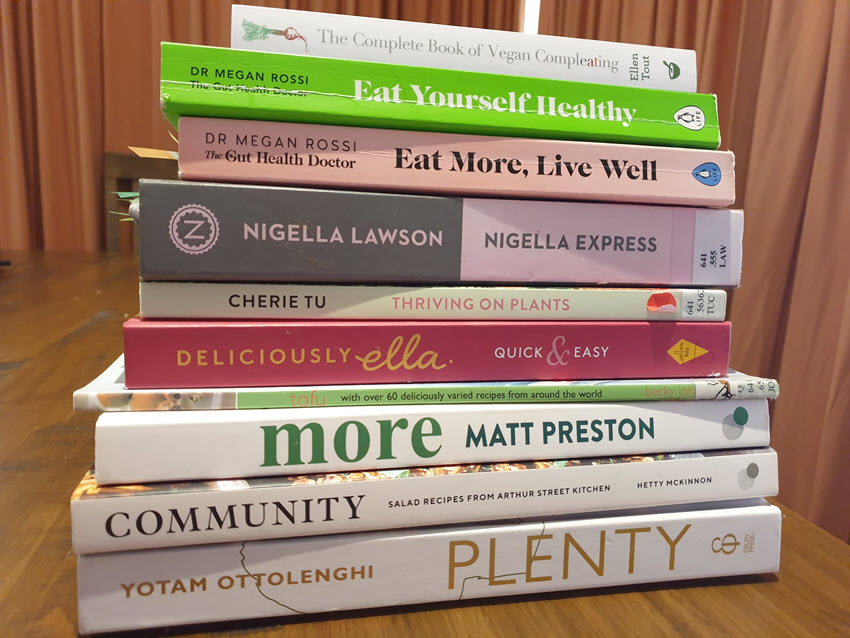
I also need to increase my exercise to help with my low bone density so have started buying some books to help. Below are the books I’ve brought from the same second hand charity shop.
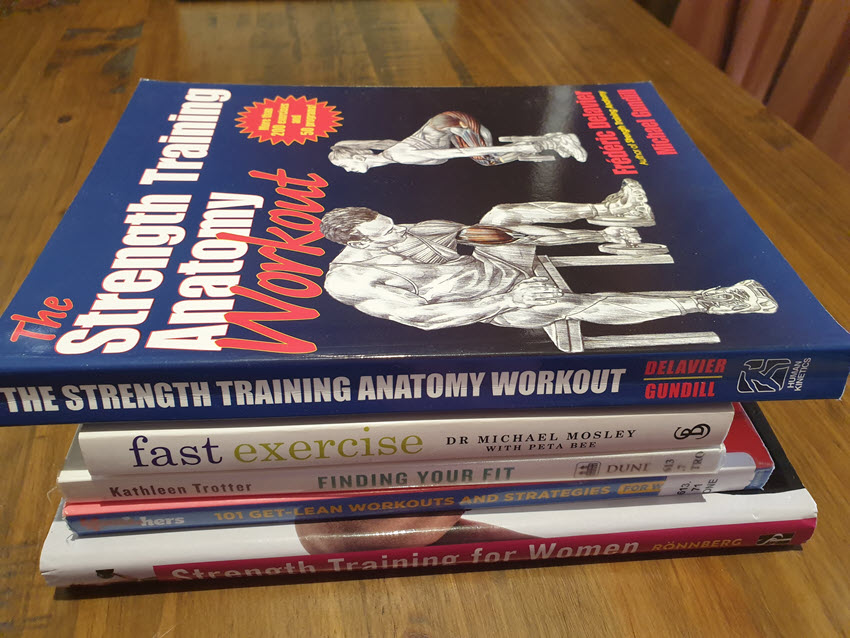
Having tools that also make it easy helps. The ones I’ve found helpful include:
- Standup mandoline slicer – safer to use than a standard mandoline and makes it quick to prepare vegetables for stir fries.
- Tofu Press – Easy option for pressing tofu if you want to quickly remove water from the tofu before cooking.
- Multi Food Processor – I have a combined food processor and blender which allows me to keep it on my kitchen bender. It isn’t as powerful as a separate blender or food processor but is more convenient.
- Insta Pot – I use my Instant Pot for batch cooking different whole grains which I freeze in meal size portions in resealable bags so I can quickly grab from the freezer as needed. Alternative option would have been a rice cooker.
Attractive and Satisfying
Batch cooking and batch preparing also helps make it easier as well as ensuring healthier food is handy and visible in the fridge or freezer for when ready to eat.
It is a nice feeling to open up the fridge and see food already prepared ready to eat when I’m feeling tired.
Most food I prepare tastes better than the food I might buy when eating out so I generally prefer the food I prepare.
I continue to experiment with growing my own herbs, and some veggies, which is work in progress but is important since it is better to add herbs and spices to cooking and not add salt. Mints doing well, sweet basil is coming along nicely and hopefully my new dill and coriander survive my gardening skills.

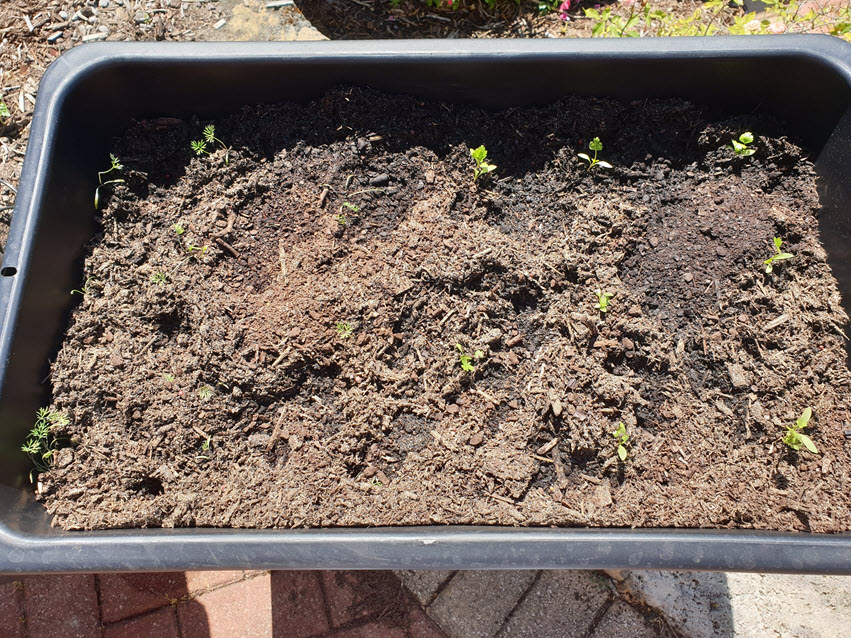
Filling Environment With the Right Cues (Prompts)
Besides having food prepared in the fridge I only keep healthier snacks in the cupboard and freezer. This ensures that it’s easy to grab the healthier choices while making less healthier choices harder to access and ensuring there is less prompts to grab less healthier options.
These are my two favorite snacks for in the cupboard which I purchase as 5 pack snack bags.

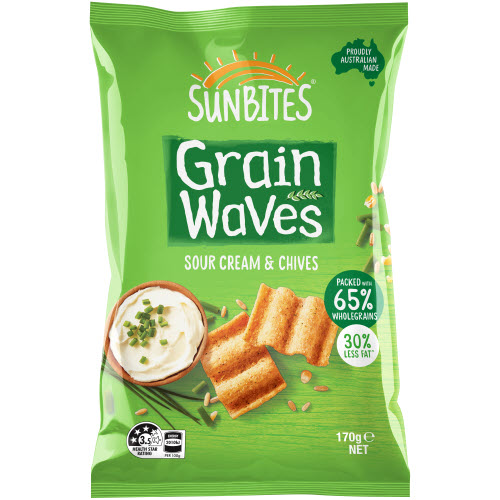
Nuts are challenging for us both! Nuts are good, a healthy choice, are part of a plant diversity diet and are fine provided they are eaten in moderation. Trouble is storing the different nuts in the fridge door has increased our prompt to eat the nuts which can result in eating too many nuts.

Bad Habits Harder
Eating out and takeaway are where I’m more likely to make less healthier choices. To make it harder I won’t order food to be delivered. My rule is if I am home, and decide I really want takeaway, is I must drive and buy the food myself from the shop. This makes getting the takeaway harder as it requires more effort and can take longer helping make it less desirable. It also helped save money since we order less takeaway while also reducing the costs involved with it being delivered.
Habit Stacking
Habit stacking is where you link a new habit(s) with existing habits. This links the prompt for the new habit(s) to the existing habit.
For example, at the start of each day I think about what are the most important things I need to do today and these are:
- Get enough sleep.
- Reduce stress.
- Eat a healthy balanced diet.
- Get enough exercise.
I achieve this by going for a walk, before or after breakfast (dependent on weather), after which I make sure my meals are prepared for lunch and dinner. Walking and meal preparation are habits stacking linked to my breakfast.
Progress Not Perfection
It’s not about being perfect; it’s about appreciating what I’ve achieved and celebrating each small victory. There will be ups and there will be setbacks.
Setbacks are part of life. I now focus on setbacks as a learning opportunity and no longer see them as a mistake or a reason to give up. And when setbacks happen I remember my values: self care; self development, supportive, persistence, acceptance and open mindedness.
I also focus on slow and steady wins the race. What is the one thing or change I can make today that will help. Once that is achieved what is the next thing or change? And the the next?
Final Thoughts
I’ve struggled writing this post for the past month. The words wouldn’t flow.
It’s been timely finishing off this post today as I’ve experienced a setback of feeling unwell from a cold for the last week where I haven’t been up to cooking, exercising or felt like eating healthier food.

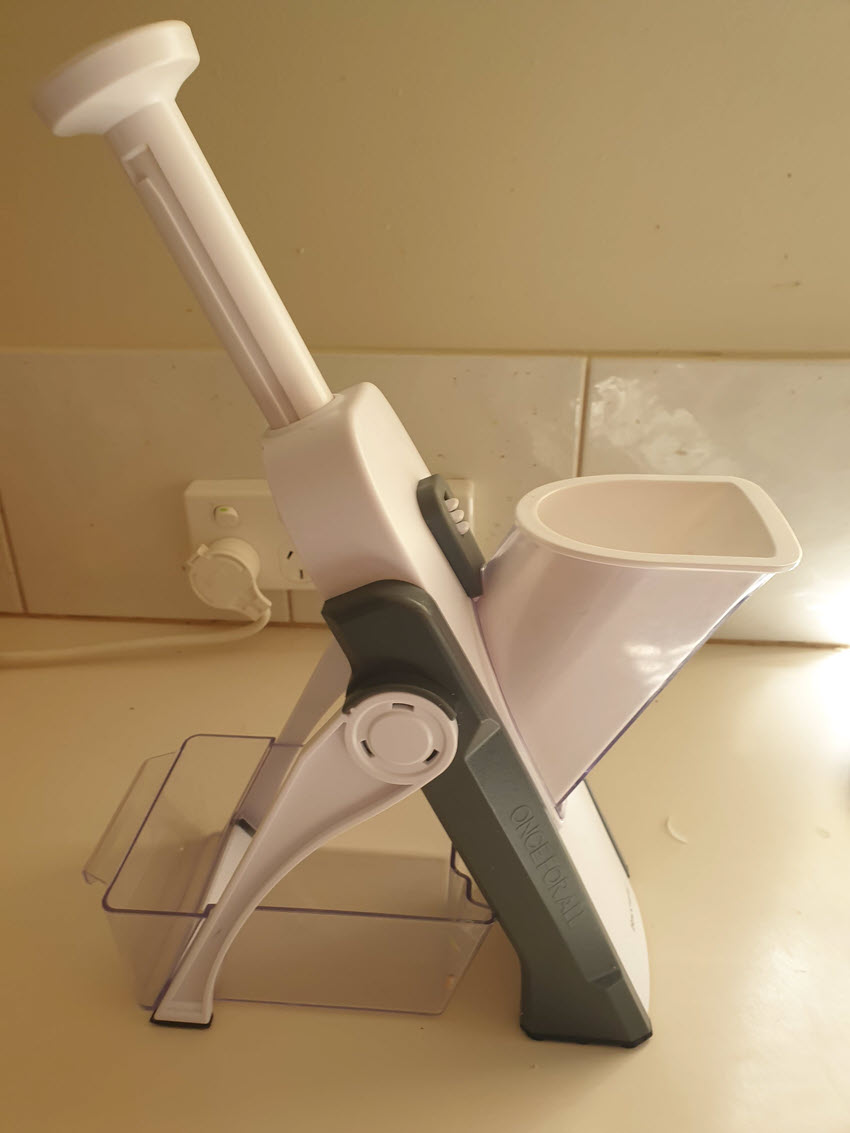



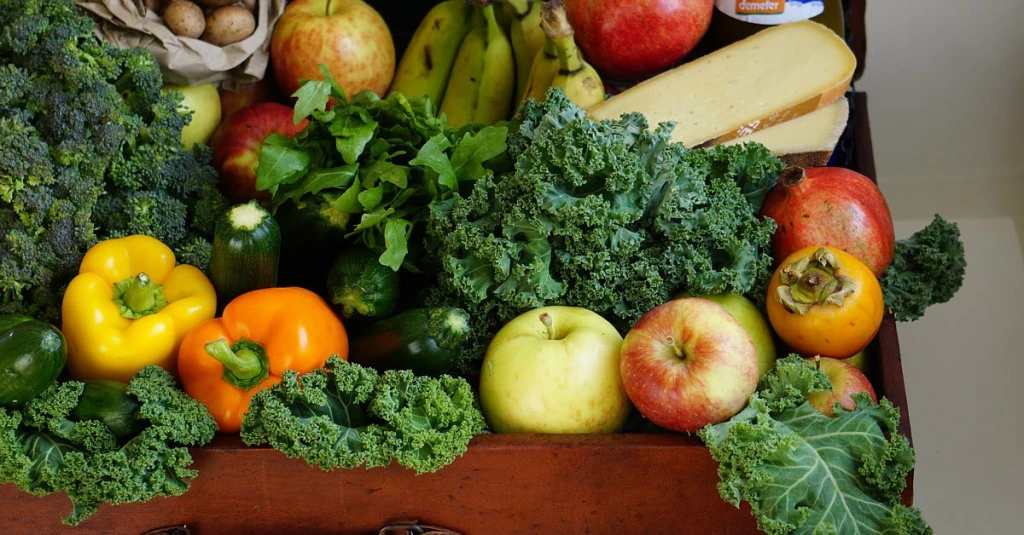

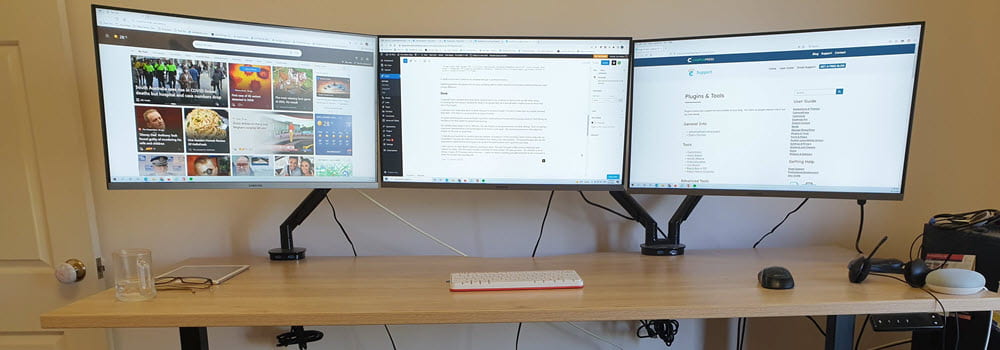
Leave a comment